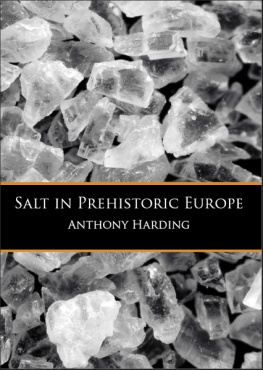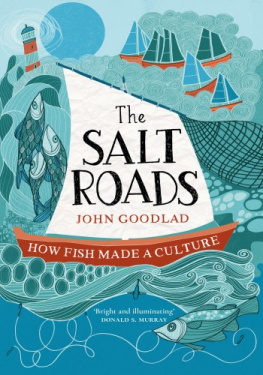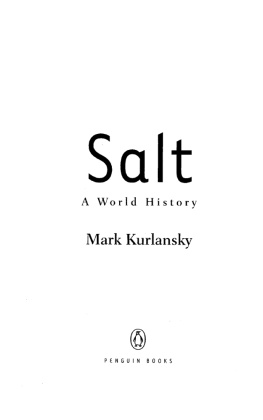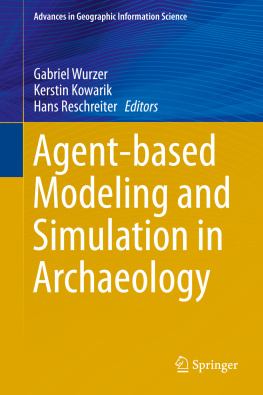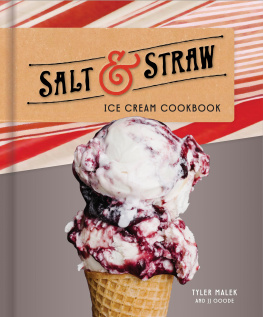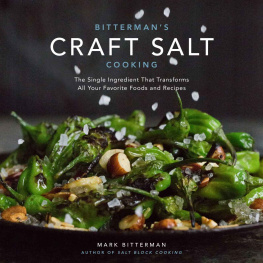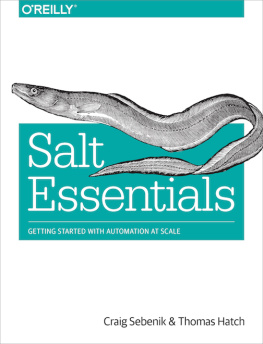
2013 A.F. Harding
Published by Sidestone Press, Leiden
www.sidestone.com
ISBN 978-90-8890-201-7
EPUB ISBN: 9789088902383
MOBI ISBN: 9789088902390
Photograph cover:
front: Salt Crystals, photograph by Paul Looyen, Dreamstime.com
back: Hallstattersee, Austria, photograph by RoCe, Dreamstime.com
Lay-out & cover design: Sidestone Press
Preface
This book seeks to set out the current state of play in the study of prehistoric salt-working in Europe, with some consideration of other parts of the world and other periods where these seem to provide information of interest or value to the task in hand. I have tried to avoid simply repeating information that has been frequently presented in the past, though inevitably some of this appears in order to provide the context in which the current situation may be viewed.
The book stems from a long-standing interest in salt on my part, even though my substantial publications on the topic are of relatively recent date and come principally from the fieldwork which Valeriu Cavruc (Valerii Kavruk) and I have conducted in Transylvania over the last 10 years. Since it has sometimes been alleged that I am a newcomer to the field, it is worth pointing out that conference papers in the 1990s considered the matter, as did a section in my book European Societies in the Bronze Age(Harding 1998; 2000, 249-254; 2001); these publications appeared just as the current interest in salt was gathering speed, but were written without input from the meetings that were taking place around that time (for instance, they were written several years earlier than a salt session at the EAA Annual Meeting in Esslingen, Germany, in 2001, which I attended).
Now that salt archaeology is an area of study in its own right, many more people are working on the topic. Their writings have inevitably contributed much to what follows in this book. I would particularly like to acknowledge the helpful insights of Olivier Weller (Paris), who knows more about archaeological salt than anyone else and who generously provided offprints on request, Elaine Morris (Southampton), the leader of salt studies in Britain, who has helped me with information on many occasions, and my colleague Valeriu Cavruc (Sfntu Gheorghe), who has given me unstinting support and intellectual stimulus over many years. For the provision of books and articles over the years, discussions, and invitations to present my material at meetings, I would like to thank Hans Reschreiter and Kerstin Kowarik (Vienna), Alfons Figuls (Cardona), Vassil Nikolov (Sofia), the late lamented Dan Monah (Iai), Thomas Saile (Regensburg), Germn Delibes de Castro and Elisa Guerra Doce (Valladolid), Janine Fries-Knoblach (Erlangen), Laurent Olivier (Paris), Cyril Marcigny (Longues-sur-Mer), Gert Goldenberg (Innsbruck), Josip Kobal (Uzhgorod), Thomas Stllner (Bochum), Wojciech Blajer (Krakw), Milan Sala (Brno), Rowan Flad (Harvard), Janice Kinory (Oxford), Jonathan Tern (Zaragoza), Antonio Morgado (Granada), Horia Ciugudean (Alba Iulia), Marc Talon (Croix-Moligneaux), Ian Brown (Tuscaloosa) and David Cranstone (Gateshead).
Special thanks are due to Peter van der Broeke (Nijmegen), who read the entire manuscript in draft, saving me from several errors and making many helpful suggestions, to Eszter Bnffy (Budapest) for helpful comments on , collected information on aspects with which I was unfamiliar, and brought together the illustrations, redrawing several of them. The book could not have been brought to fruition without their help. Lastly, the efficient help from Karsten Wentink at Sidestone Press is gratefully acknowledged.
Exeter, UK
August 2013
Chapter 1
Introduction
One may seek less after gold, but there is no one who does not wish to find salt; deservedly so, since every kind of food owes its savour to it (Cassiodorus, Variae Epistolae 12.24) (written AD 537/ 538)
The archaeological study of salt in Europe has in recent years seen something of an explosion in interest. In part this is due to a number of remarkable discoveries, in several countries of Europe, and in part to a renewed interest in the commodity as an important element in ancient economies. Especially in the years since 1999 there have been a sizeable number of conferences, seminars and colloquia, resulting in collected volumes, monographs and other publications that have transformed the academic landscape where the study of salt in archaeology is concerned. Many of these publications, or the articles in them, are referenced in this book. A rather small group of scholars have led the way in recent years in the study of salt in prehistory, most notably Olivier Weller (Paris). Their writings, and the meetings and publications they have inspired, have led the way for many others to carry on research into one of the most fundamental, yet intangible, materials encountered in human life. This is not to forget the work of a considerable number of scholars who have made important contributions to the topic, and whose work is considered here.
In many ways this interest is not surprising, since salt is without question important to human societies for a number of reasons, in the present as in the past (see below). Archaeologically, however, salt is difficult to study, since sodium chloride is highly soluble and does not survive when exposed to the elements, or the percolation of water (only one find of actual salt solids appears to be known, that from Kopaka near Zakro in Crete, though pieces of rock salt were discovered in excavation at Pobiednik Wielki near Krakw in southern Poland: below, ). This means that salt can so far only be studied through the production sites where it was once extracted or created mines, outcrops, springs, or streams along with the equipment used for the purpose. Luckily the bacteriocidal action of salt means that organic remains are often preserved in ancient salt production sites, notably wood, but in some cases such as Hallstatt leather and textiles. This has in some cases enabled a detailed study of fixed constructions, portable objects, and thus potential techniques for salt production.
A number of general books, catalogues, articles or edited volumes have appeared in recent years, written for a variety of audiences ranging from the interested layman to the non-specialist academic (e.g. Adshead 1992; Astrup et al. 1993; Bergier 1982; Dopsch et al. 1994; Ebenbichler & Ebenbichler 2009; Hocquet 2001; MacGregor & De Wardener 1998; Multhauf 1978; Riera et al. 2001). The book by Mark Kurlansky (2002) has attracted considerable attention because of its wide range and easy writing style; while not strictly an academic study, it is nevertheless a treasure trove of information not easily acquired from the academic literature. The books by Robert Multhauf and Jean-Franois Bergier are likewise highly informative histories of salt production, though for present purposes their concentration on historic periods and reliance on secondary sources makes them less useful.
There are, of course, also a fair number of specialist volumes and articles, many arising from conferences (e.g. Carusi 2008; Daire 2003; Figuls i Alonso & Weller 2007; Monah et al. 2007; Vogt 2003; Weller 2002c; Weller et al. 2008a), and exhibition catalogues (e.g. Cavruc & Chiricescu 2006; Kull 2003b; Thoen 1990; Treml et al. 1995). There are even books that appear to be about salt but in fact have little or nothing to do with it (e.g. Schwaiger 1977; Truong 2003, a novel about Paris in the 1930s). This is to say nothing of the many works that deal with a specific site or area, usually in a specific period (e.g. Kern
Next page
